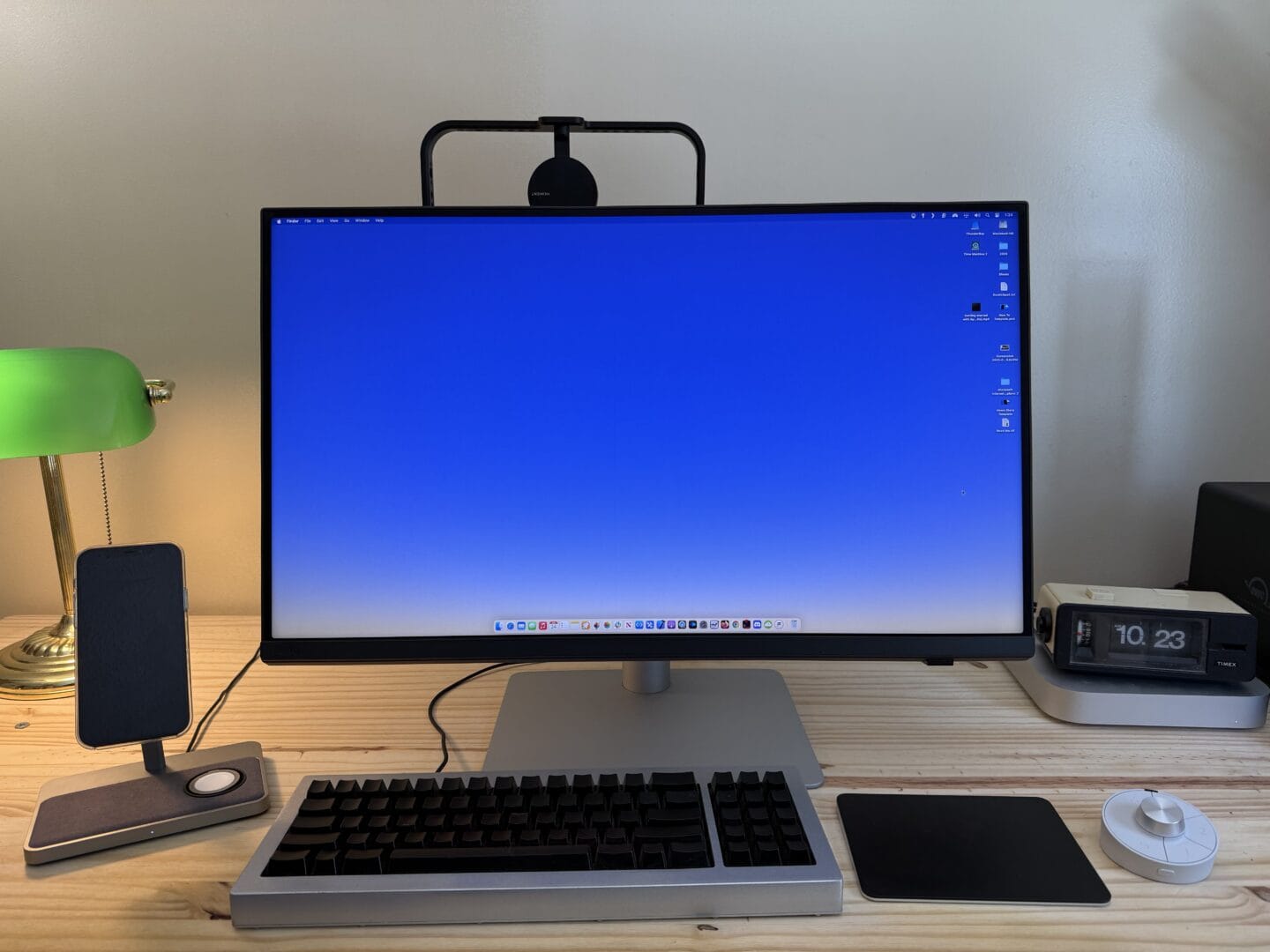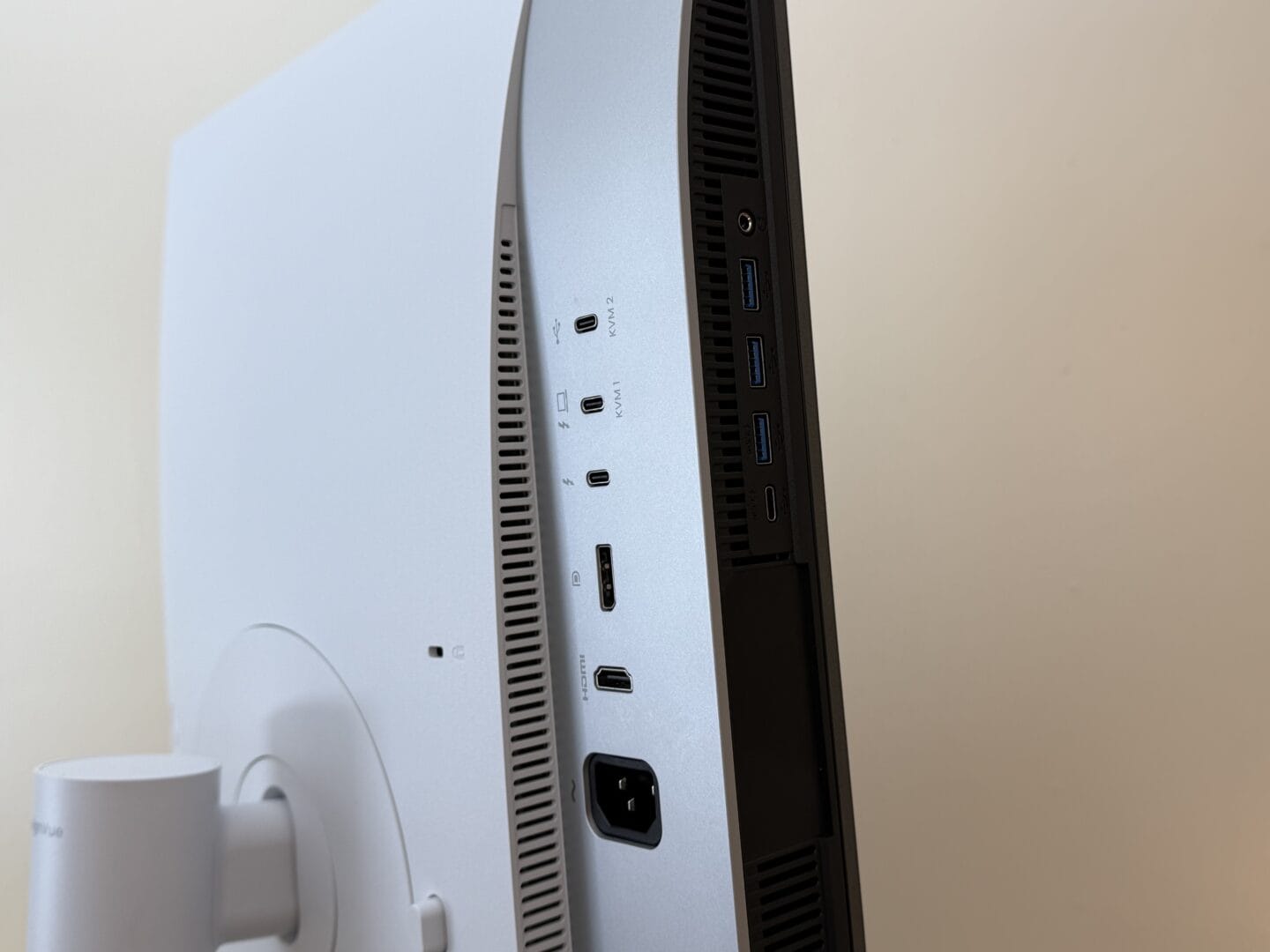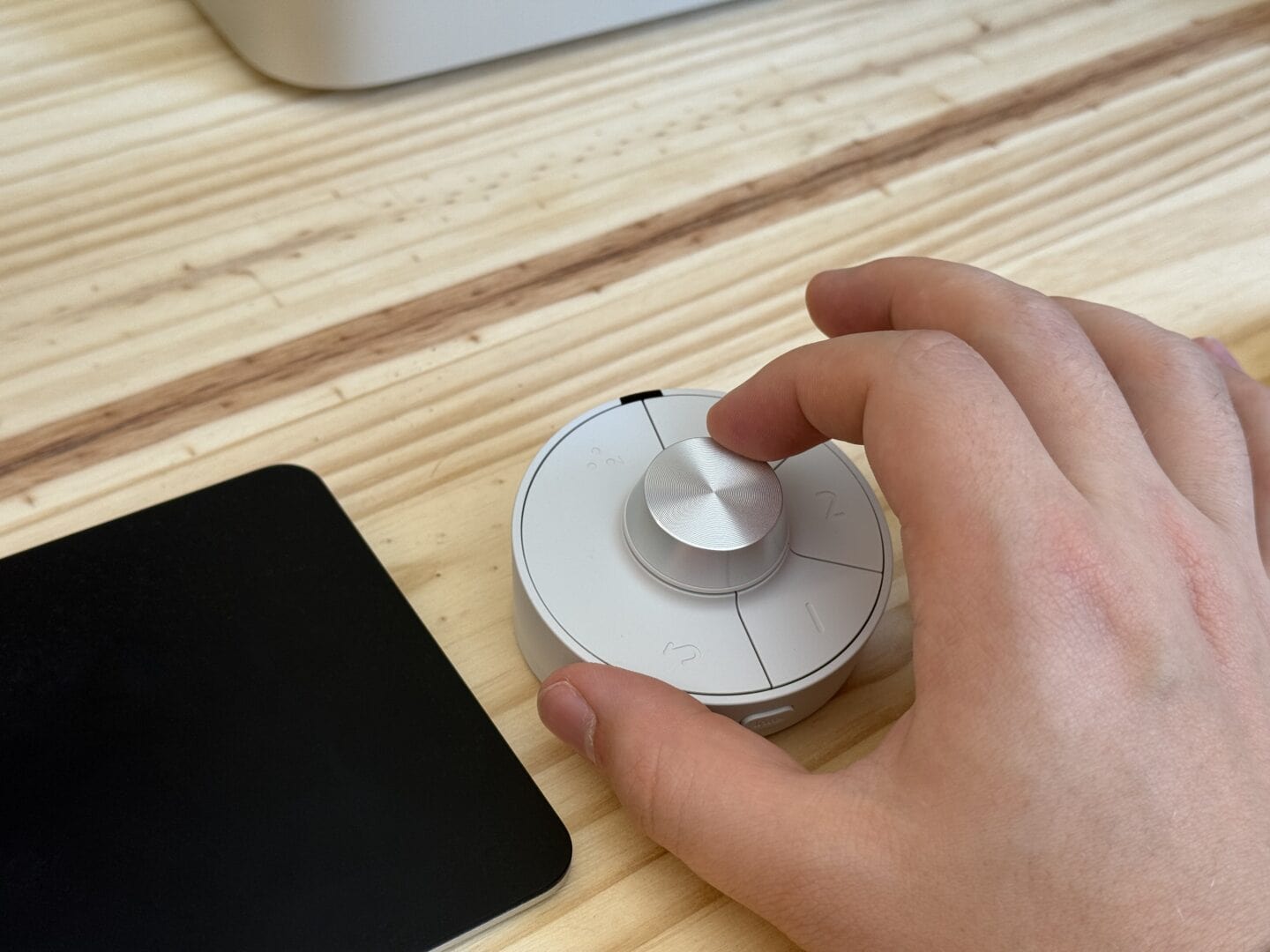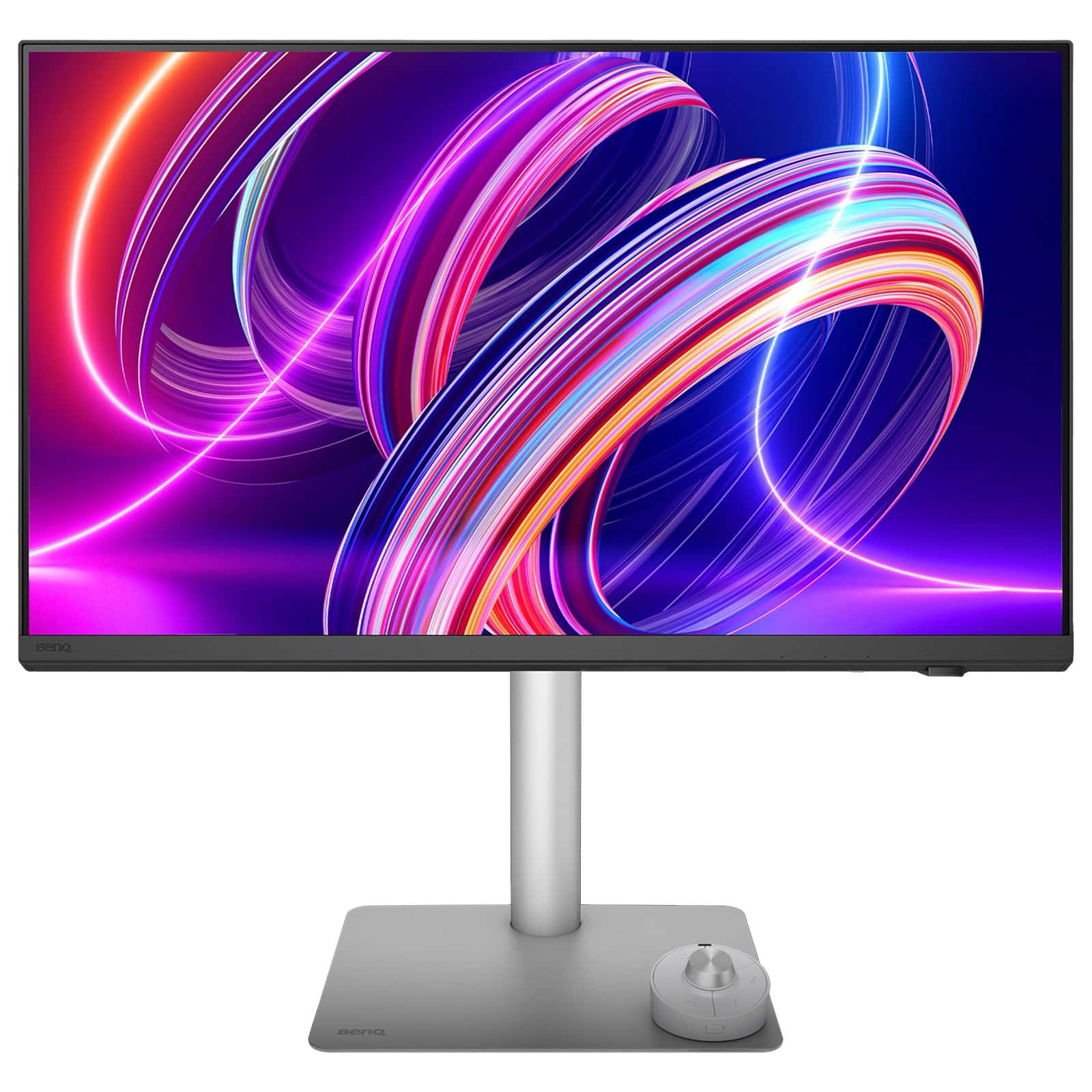As you’ll read in our hands-on review of the BenQ DesignVue PD2730S, this Apple Studio Display alternative offers similar specs at a lower price. The new BenQ display delivers the same 27-inch screen, 5K Retina resolution, frame rate, color gamut and Thunderbolt connectivity as Apple’s pricey monitor.
This formula might ring a bell — BenQ’s new high-end display is the second Studio Display alternative to hit the market. The BenQ display proves nicer than the Asus ProArt 5K I reviewed two months ago, but it also costs more ($1,199 compared to $799).
One thing is for sure: Both are still a steal compared to the Studio Display, which starts at $1,599. Read on to see how these monitors stack up.
Studio Display alternative: BenQ DesignVue PD2730S review
Starting in 2012, Apple began bringing Retina displays to the Mac. These displays pack four times as many pixels as other monitors, so text looks nicer and pictures look sharper. Apple’s partnership with LG produced the UltraFine displays, 5K iMac, Studio Display and Pro Display XDR — the only viable options on the market for far too long.
The PC industry, driven by PC gaming, largely pursued higher frame rates and ultrawide panels. For Mac users, the coveted 5K resolution 27-inch monitor was a rarity. Inexplicably, more-affordable Studio Display alternatives are now debuting in rapid succession.
- 5K Retina resolution
- Big 27-inch display
- Bright, vivid colors with P3 wide color
- Thunderbolt 4 dock
- No built-in camera
- 60 Hz refresh rate
Table of contents: BenQ DesignVue PD2730S review
- Design and build quality
- Picture quality
- Thunderbolt connectivity
- HotKey Puck
- Other quirks and features
- Conclusion
Design and build quality

Photo: D. Griffin Jones/Cult of Mac
The body of the BenQ DesignVue PD2730S is plastic, like nearly every monitor not made by Apple. It’s pretty attractive, with body pieces colored in black, white and silver. Its 27-inch screen, with a 5K resolution at 60 Hz, gives you double the pixel density and a third more space in each direction compared to a 1080p display.
It boasts a slim bezel with a slightly protruding chin. The front looks relatively sparse, with the BenQ logo off to the left and subtly embossed in the plastic. There are no buttons on the front, but three indentations tell you where the buttons are on the bottom. A plastic square protrudes from underneath — that’s an infrared sensor that connects to the HotKey Puck remote control. (More on that later.)
A chunky design

Photo: D. Griffin Jones/Cult of Mac
The design of the BenQ DesignVue PD2730S is much heftier and bulkier than other displays I’ve used. The foot is very large, pushing my keyboard all the way up to the edge of my desk. The panel itself is surprisingly thick as well, closer to an LCD display from the early 2000s than others I’ve used from the last 10 years.
However, the build quality is excellent. I’m impressed by the fit and finish. There is very little creaking and no wobbling. This is the first display I’ve used that is freely rotatable between landscape and portrait where the panel doesn’t shake left and right when the desk is bumped or nudged.
The included stand raises, lowers, swivels and rotates the display at no extra cost. As it should be.
Studio Display alternative with comparable picture quality

Photo: D. Griffin Jones/Cult of Mac
A close review of the BenQ DesignVue PD2730S reveals a picture quality that is brilliant, bright and vivid. With a maximum brightness of 400 nits, which is not quite as bright as Apple’s Studio Display, it’s still plenty bright to see clearly in a well-lit office.
It supports 98% of the P3 color gamut — slightly behind the Asus ProArt 5K display. It only offers HDR at 400 nits, not 500. These differences are only slightly noticeable if you’re a graphic designer; most people won’t be able to tell at all.
The display comes with a matte finish, normally something to avoid, but not here. The bright colors absolutely pop, with no irritating reflections. The image looks perfectly sharp and vivid.
Professionally calibrated for exceptional color reproduction
There’s absolutely nothing to adjust out of the box, either. This affordable Studio Display alternative comes professionally calibrated on all the settings you’d want. All I did was switch to the Display P3 color mode. BenQ even includes a little pamphlet in the box with the calibration test results of your particular display (a lovely touch). The test results for mine confirm that it delivers uniform color and high accuracy.
BenQ also offers software for professionally calibrating your display yourself and for precisely color-matching multiple displays — though I was unable to test these myself.
Unfortunately, my display was not entirely without problems. Two vertical lines across the middle of the display appear intermittently. One of them is dark red; the other is a very subtle light green. BenQ quickly sent a replacement. Considering my display passed its test results, I’m chalking the lines up to shipping damage. However, I will update this review after I ship my monitor back to BenQ for analysis.
A PR representative told me “the samples provided to journalists are not representative of mass production units” and “may exhibit unexpected issues.” I was also assured that if any customers experience similar problems, they will similarly be asked for photos of the display and the condition of the shipping box before being offered a return.
Thunderbolt connectivity

Photo: D. Griffin Jones/Cult of Mac
Higher-end monitors frequently act as USB hubs, too, offering additional ports for a plugged-in MacBook. The BenQ DesignVue PD2730S goes above and beyond the typical few USB ports — it serves as a Thunderbolt 4 hub. That means it uses the same connector, but can offer much more connectivity.
The display packs three USB-A ports and one USB-C port on the bottom, alongside a headphone jack. You also can plug in a second display daisy-chained through it, allowing you to dock two screens with a single cable, or connect high-speed external storage.
This combination offers a huge advantage. Apple is averse to putting USB-A ports on anything; other manufacturers are averse to getting products properly Thunderbolt-certified.
With the BenQ’s Thunderbolt port, a single cable can dock your MacBook to your entire dual-screen desktop setup and charge it with 90W of power.
The ports on the back all point outward, just like Apple displays, making them much easier to plug into. They’re also clearly labeled with big, high-contrast print. The extra USB ports for the hub are all on the very bottom, where they’re easily accessible.
HotKey Puck

Photo: D. Griffin Jones/Cult of Mac
The buttons underneath the screen of the BenQ DesignVue PD2730S control the on-screen menus and interface. The larger and more prominent button on the right is the power button. The button in the middle is also a four-directional joystick for navigating the menu; the one on the left is a shortcut button for toggling display modes of your choice.
But the cooler way to interact with the screen is via the included HotKey Puck. (Say it out loud and you’ll get the pun.) This palm-size remote control is highly configurable. It comes with three numbered shortcut buttons, another button, a dial that can spin and click, and a back button. An Info button on the front will read out the current input, resolution, frame rate and color settings.
You can use the three numbered buttons to toggle between different color modes, toggle the KVM switch between two different computers, switch inputs or switch apps on your computer (using BenQ’s free Display Pilot 2 app). The dial can control volume, brightness and contrast.
HotKeyPuck: Functional and just plain fun
I imagine the HotKey Puck would prove incredibly handy if you needed to quickly set color modes or switch between two computers. Personally, I just think it’s fun spinning a big shiny metal dial on my desk.
Although the HotKey Puck connects by infrared, you don’t need to precisely point it at the display. You can hold it in your hands, put it off to the side, even point it in the exact opposite direction and it’ll still work.
The HotKey Puck is powered by two AAA batteries (not included). While devices with lithium-ion batteries are more convenient, as you can simply plug them in to top them back up, rechargeable batteries degrade over the years. It’s an interesting trade-off. I can’t tell you exactly how long the HotKey Puck will run on a set of two batteries since it hasn’t died yet, but it’s somewhere between three weeks and the heat death of the universe.
Other quirks and features
A few other odds and ends make me feel like I’m repeating myself after writing my review of the Asus ProArt 5K, the other Studio Display alternative on the market:
- The BenQ DesignVue PD2730S has a special mode where you can view two inputs side by side.
- Unlike Apple’s Studio Display, the BenQ monitor doesn’t come with a built-in camera or microphone.
- The BenQ display comes with two stereo speakers, but they’re terrible. They point out of the top of the display, which would be a weird choice if they weren’t so bad that you’re never going to use them anyway.
- The display takes about five seconds to wake up from sleep mode, just a moment slower than Unlock with Apple Watch.
- When your Mac goes to sleep, the “No signal detected” message is subtle white text on black.
- If you download BenQ’s DisplayPilot 2 software, you can apparently control brightness and volume using the keys on your MacBook. I was unable to test this due to not owning a MacBook and my general distaste for installing extra software.
BenQ DesignVue PD2730S review conclusion: Studio Display alternative at a happy medium price
Apple’s Studio Display remains the best of the best for a Mac. Its premium features make it just a little nicer all around than alternatives like the BenQ DesignVue PD2730S. However, with speculation that an updated model could be on the way, it’s hard to recommend Apple’s monitor in January 2025.
Stacked against the Asus ProArt 5K, which costs just $799, BenQ’s new display costs a bit more at $1,199. You do get what you pay for, though. The superior build quality and Thunderbolt support make up for the modest decrease in P3 color and bulkier design.
If you’re shopping for a less-expensive Studio Display alternative, the BenQ DesignVue PD2730S is a viable option. It’s much cheaper than a Studio Display with an adjustable stand and matte finish at $2,299. However, you often can find Apple’s base model refurbished or discounted as low as $1,350 these days.
Ultimately, I think it’s great that there are even more affordable choices in the Mac display market — with more on the way.
★★★★☆
Buy from: BenQ
- 5K Retina resolution
- Big 27-inch display
- Bright, vivid colors with P3 wide color
- Thunderbolt 4 dock
- No built-in camera
- 60 Hz refresh rate
BenQ loaned Cult of Mac with a review unit for this article. See our reviews policy, and check out more in-depth reviews of Apple-related items.
![Another Studio Display alternative for Mac graphic designers [Review] BenQ PD2730S display, a Studio Display alternative](https://www.cultofmac.com/wp-content/uploads/2025/01/BenQ-PD2730S-Setup.jpeg)


